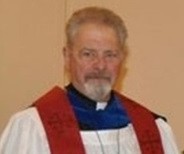
Between Pentecost, AD 30, or so, and AD 325, there were no formal divisions in the Christian Church, but there were many de facto differences. Most of these were minor and capable of being worked out in Councils of Bishops. Some were more significant, and these, in most cases, resulted in that portion of the whole Church that held these beliefs being expelled from the Church. These were called “heresies”, and those who insisted on following them, “heretics”. This was the fate of, for instance, the Arians, who believed Christ was not divine; the Gnostics, who believed that the true Christian message was hidden from ordinary mankind; the Montanists, who believed a “New Age” sort of gospel, with people talking to spirits and having new revelations, and so forth; the Marcionites, the Docetists, the Donatists, and others. In 325, the Emperor Constantine called all the Bishops in the Empire together and they set down, once and for all, what was to be the doctrinally correct position of the Church.
It didn’t work, of course, and almost immediately, some Churches began leaving the “catholic” or “orthodox” Church. Over the next four or five hundred years, the Ethiopians, the Copts, the Armenians, the Nestorians, and a dozen more left the Church for one reason or another. In the west, though, the process was the opposite. In the west, the separate Churches tended to become subject to one Bishop, he of Rome. In this way the Gallican and the Celtic Churches became subject to Rome, and, though many Christians were lost to Islam as it thundered across northern Africa in the Seventh Century (and even into Spain), the Patriarch of Rome (the “Pope”) became stronger even as the Patriarchs of Jerusalem, Antioch, Alexandria and Constantinople became weaker in terms of their influence on worldly affairs. Thus, for a thousand years, the so-called “dark ages”, the Church in the west remained essentially unchanged in terms of message and structure.
That’s not to say it didn’t change at all. It certainly did, and not for the better. Lord Acton was to say, Centuries later, that “power tends to corrupt, and absolute power corrupts absolutely.” That certainly was true in the Roman Catholic Church. The higher up in the hierarchy a man went, the more power he had, and the more corrupt he was likely to become. And, the most corrupt, too often, turned out to the Popes, themselves. This tendency was what caused a simple priest and college professor named Martin Luther to, in 1517, post on the University door where he taught, a list of 95 issues that he wished to discuss. He had no idea what he was starting!
